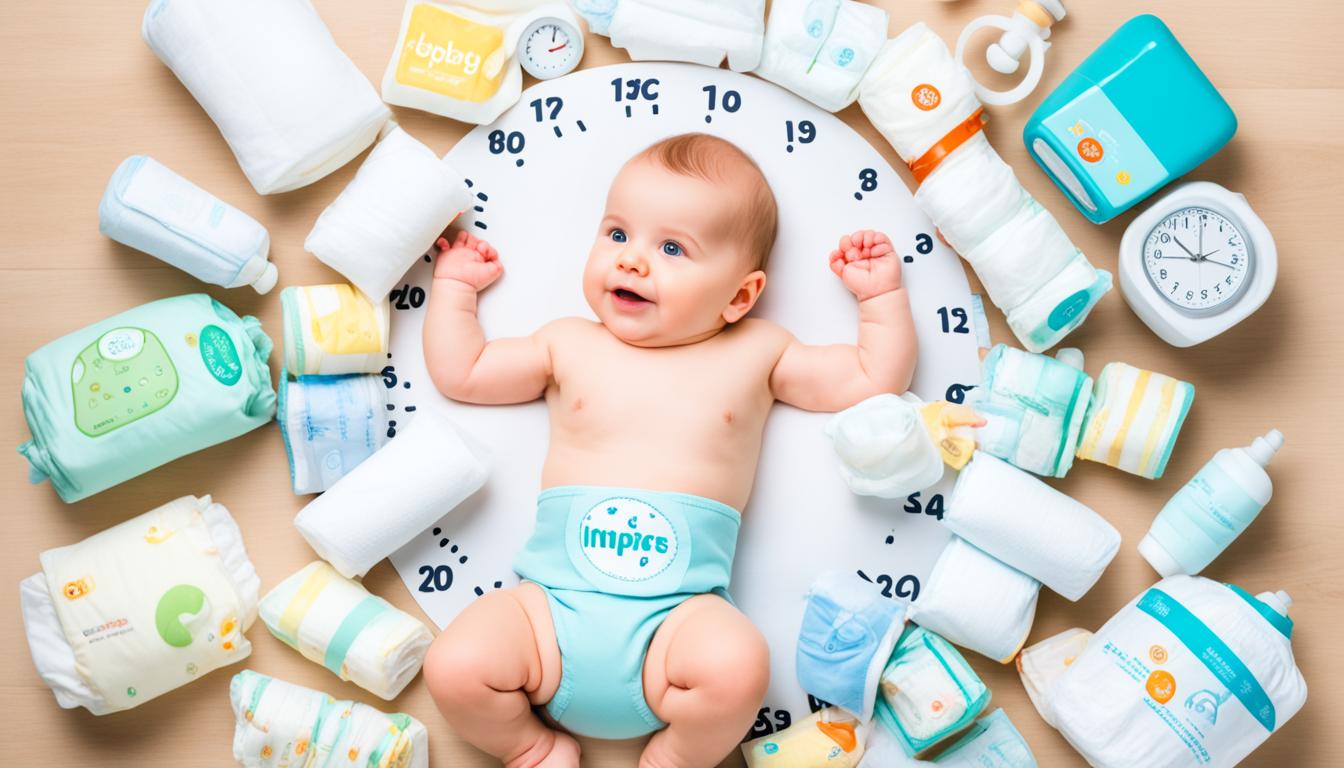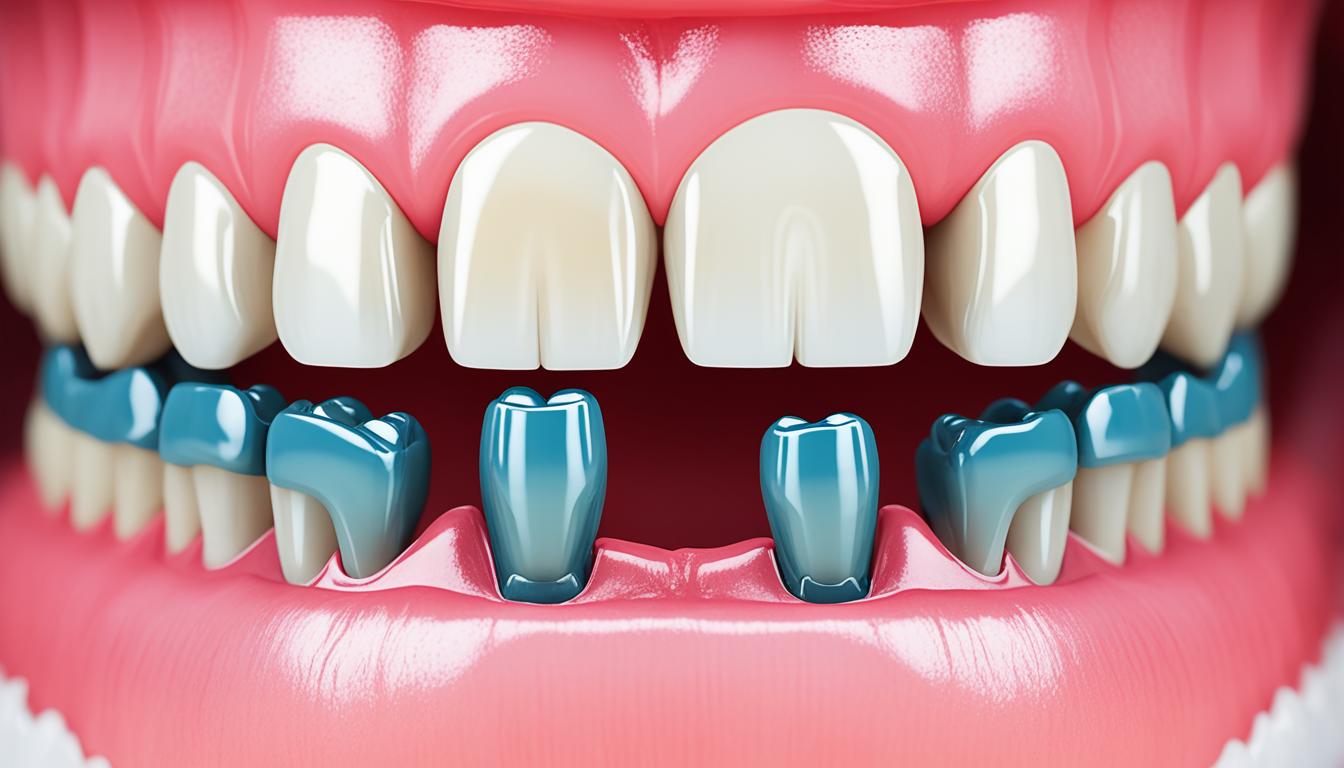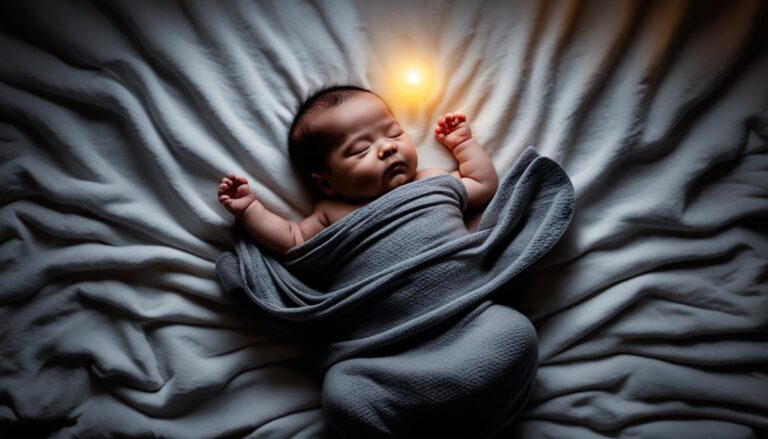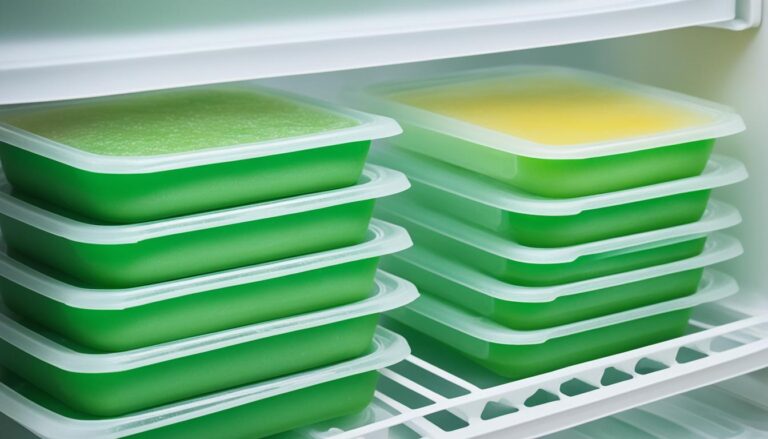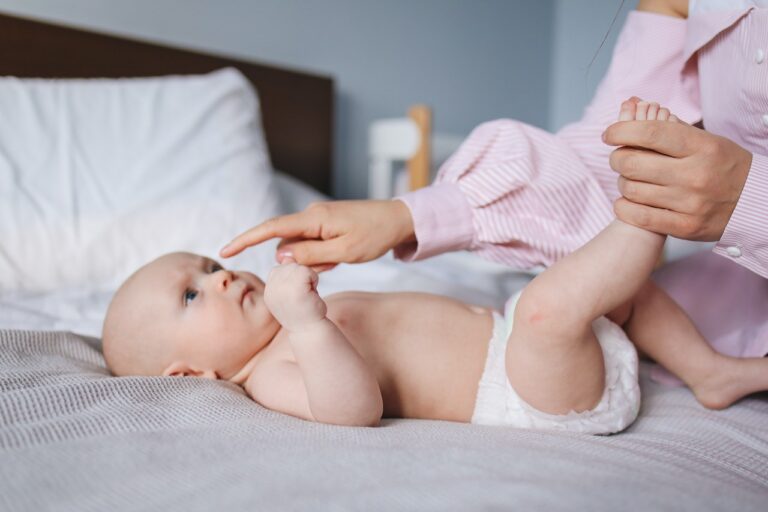Optimal Frequency for Baby Hair Washing
As a parent, you want the best for your baby, and that includes keeping their hair clean and healthy. But how often should you actually wash baby hair? Is it necessary to wash it every day, or is a few times a week sufficient?
It is important to understand that baby hair is delicate and continuously developing. In fact, baby hair is five times thinner than adult hair, which means it requires extra care and attention. Using products specifically formulated for babies is crucial to ensure their hair remains healthy.
The American Academy of Pediatrics recommends washing your baby’s hair two or three times a week using a mild shampoo. Regular “topping and tailing” can also help keep their face and body clean without always needing a full wash. By following these guidelines, you can maintain your baby’s hair cleanliness without stripping away natural oils.
Key Takeaways:
- Understanding that baby hair is delicate and continuously developing
- Baby hair is five times thinner than adult hair
- The American Academy of Pediatrics recommends washing baby hair two or three times a week
- Regular “topping and tailing” can help keep their face and body clean
- Using mild shampoos specifically formulated for babies is crucial
The Importance of Hair Care for Babies
Taking care of your baby’s hair is crucial for their overall well-being. As their hair is still developing, it requires gentle and mild products specially designed for babies. Establishing a proper hair washing routine tailored to your baby’s needs can help keep their hair clean and healthy. Let me share some best practices to ensure effective and safe hair care for your little one.
- Use lukewarm water: When washing your baby’s hair, use lukewarm water to prevent scalp irritation. Avoid using hot water as it can strip away natural oils.
- Choose baby-specific products: Opt for shampoos and conditioners specifically formulated for babies. These products are gentle, pH-balanced, and free from harsh chemicals.
- Be gentle: Handle your baby’s hair with care and avoid excessive pulling or tugging. Use your fingers or a soft brush to untangle any knots or tangles gently.
- Follow a regular routine: Establishing a consistent hair washing routine can help maintain scalp health and prevent buildup of dirt and oils. Aim to wash your baby’s hair two to three times a week, depending on their needs.
“Proper hair care for babies is essential for maintaining scalp health and promoting healthy hair growth.”
Using Baby-Specific Products
When it comes to selecting hair care products for your baby, it’s important to choose those specifically formulated for their delicate hair and scalp. Baby shampoos and conditioners are designed to be gentle, nourishing, and safe for regular use. Look for products that are pediatrician-approved and dermatologically tested to ensure their suitability for your baby’s sensitive skin. Natural ingredients like Shea, Avocado, and Coconut oils can provide added benefits by keeping the hair and scalp moisturized.
“Using baby-specific products helps maintain the delicate balance of your baby’s hair and scalp.”
Caring for Your Baby’s Hair
In addition to regular hair washing, there are other essential tips to keep in mind when caring for your baby’s hair:
- Gently dry your baby’s hair: After washing, gently pat their hair dry with a soft towel. Avoid rubbing vigorously, as it can cause damage or tangles.
- Trim when necessary: If your baby’s hair grows long and starts to interfere with their eyes or get tangled easily, consider trimming it. Choose a calm and comfortable time, and trim small sections at a time.
- Address scalp conditions: Keep an eye out for scalp conditions like cradle cap, which can cause flaky or crusty patches on the scalp. Use baby-friendly treatments recommended by pediatricians to address such conditions.
“Proper care and maintenance lead to healthier and more manageable hair for your baby.”
| Benefits of Gentle Hair Care | Tips for Effective Hair Care |
|---|---|
| Promotes healthy hair growth | Use lukewarm water while washing |
| Prevents scalp irritation | Choose baby-specific products |
| Maintains scalp health | Handle hair with care |
| Reduces the risk of tangles and knots | Follow a regular hair washing routine |
“By following these baby hair care tips, you can ensure your little one’s hair stays clean, healthy, and beautiful.”
Understanding Your Baby’s Hair Growth
As your baby grows, their hair goes through various stages of development. It’s important to understand these stages to properly care for your little one’s delicate locks. During the first few months of life, it’s common for babies to experience natural hair loss. Don’t panic! This is part of their normal growth process. Around 3 to 7 months, you’ll start to notice new hair growth. However, it’s essential to remember that their hair isn’t fully developed until around 2 years of age.
When it comes to washing your baby’s hair, it’s crucial to find the right balance. While you want to keep their hair clean, it’s equally important not to strip away their natural oils. The frequency of hair washing can vary, but a general guideline is to wash their hair two to three times a week. This schedule allows you to maintain cleanliness without overwashing and causing dryness.
Baby Hair Washing Schedule:
| Age | Frequency of Hair Washing |
|---|---|
| Newborn to 6 months | 2-3 times per week |
| 6 months to 2 years | 2-3 times per week |
By following this baby hair washing schedule, you can keep your little one’s hair clean and healthy without causing any unnecessary discomfort or dryness. Remember, every baby is unique, so adjust the frequency based on their individual needs.
Tips for Washing Your Baby’s Hair
When it comes to washing your baby’s hair, there are a few tips and tricks to keep in mind to ensure a gentle and effective cleaning routine. Here are some helpful guidelines to follow:
1. Use Lukewarm Water
Start by using lukewarm water to wet your baby’s scalp. It’s important to test the temperature to avoid any discomfort or irritation.
2. Gently Massage the Shampoo
Apply a small amount of baby shampoo to your hands and gently massage it into your baby’s entire scalp. Use your fingertips to create a lather and cleanse their hair thoroughly.
3. Rinse Thoroughly
After shampooing, make sure to rinse your baby’s hair thoroughly to remove any traces of shampoo. Take extra care to avoid getting suds in their eyes.
4. Softly Towel Dry
Once the hair is clean, softly towel dry your baby’s hair to remove excess moisture. Avoid rubbing their hair vigorously, as this can cause tangles or discomfort.
5. Choose Gentle Products
Opt for baby-specific shampoos and conditioners that are specially formulated for your baby’s delicate hair and scalp. These products are designed to be gentle and mild, reducing the risk of irritation.
By following these tips, you can ensure that your baby’s hair washing experience is safe, soothing, and effective in keeping their hair clean and healthy.
How to Choose the Right Products for Baby Hair Washing
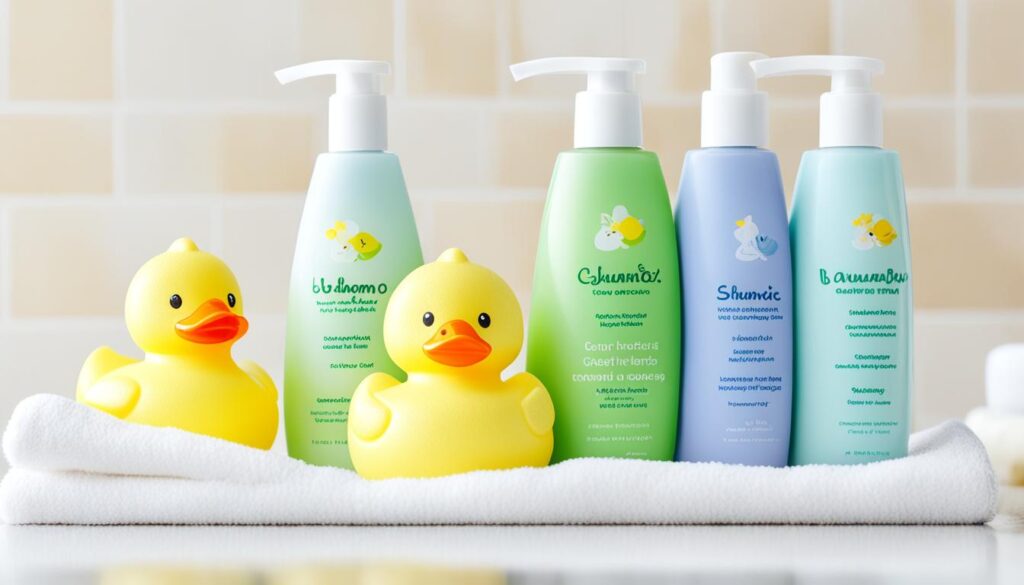
When it comes to washing your baby’s hair, choosing the right products is essential for their delicate strands. Opting for mild and gentle formulations specifically designed for babies ensures that their hair and scalp stay healthy and nourished. Remember, adult shampoos and harsh products can irritate their sensitive skin, so it’s best to avoid them.
Look for shampoos that are pediatrician-approved and dermatologically tested to ensure their safety. These products are specially formulated to be gentle on your baby’s hair and scalp. Consider using shampoos enriched with natural ingredients like Shea, Avocado, and Coconut oils. These nourishing ingredients help keep your baby’s hair and scalp moisturized, preventing dryness and discomfort.
By using the right products, you can maintain your baby’s hair’s cleanliness and health while keeping their sensitive skin well-cared for. Remember, always read the labels and choose products that are suitable for babies and free from harsh chemicals or irritants.
Washing and Conditioning Baby’s Hair
Washing your baby’s hair is not just a hygienic routine; it can also be a soothing experience and a special bonding time. Here’s how you can effectively clean and condition your baby’s hair:
- Moisten their scalp: Start by wetting your baby’s scalp with lukewarm water. This helps to prepare their hair for shampooing.
- Apply baby shampoo: Use a small amount of baby shampoo specifically designed for their delicate hair. Gently lather the shampoo into their hair, paying attention to the scalp.
- Rinse thoroughly: Rinse your baby’s hair thoroughly, ensuring that no shampoo residue remains. You can use a cup or your hand to pour water over their head, being careful not to get any water or suds in their eyes.
- Condition if necessary: If your baby’s hair is prone to tangles, you can consider using a baby-specific conditioner or detangling spray. Apply a small amount and massage it through their hair with your fingers or a wide-toothed comb.
By following these steps, you can keep your baby’s hair clean, healthy, and manageable. Remember to use gentle products specifically formulated for babies to avoid any potential irritation or harm to their delicate hair and scalp.
How to Dry Your Baby’s Hair
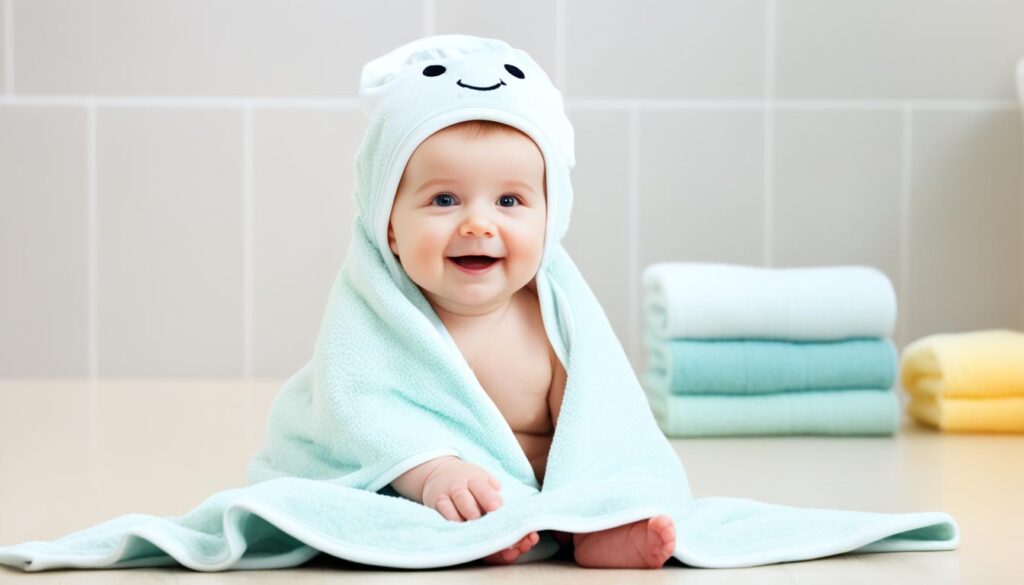
After washing your baby’s hair, it is important to dry it properly to avoid discomfort or irritation. You can allow their hair to dry naturally or use a soft towel to gently pat and soak up any excess water. Avoid rubbing their hair vigorously, as this can cause damage or tangles. If needed, you can use a hair dryer on the lowest heat setting, keeping it at a safe distance from their scalp.
Drying your baby’s hair properly is crucial to ensure their comfort and prevent any potential issues. Here are some tips:
- Gently pat: After washing, use a clean, soft towel to gently pat and soak up the excess water from your baby’s hair. Avoid rubbing their hair too vigorously, as it can cause hair breakage or tangles.
- Air drying: If the weather permits, you can allow your baby’s hair to dry naturally. It is a gentle and convenient method, as it avoids any heat or potential damage from hair dryers. Make sure the room is warm and well-ventilated to aid the drying process.
- Low heat setting: If you prefer using a hair dryer, choose the lowest heat setting to minimize the risk of overheating your baby’s scalp. Keep the dryer at a safe distance from their head and constantly move it to avoid concentrated heat in one area.
- Use a diffuser: Hair dryers with a diffuser attachment can help distribute the heat more evenly, reducing the risk of damaging your baby’s hair or scalp. The diffuser also helps to maintain the natural texture of their hair.
Remember, your baby’s hair is delicate and requires gentle care. By following these drying techniques, you can ensure their hair remains healthy and comfortable.
Dealing with Cradle Cap
Cradle cap is a common condition that affects many babies, causing crusting and the formation of white or yellow scales on the scalp. While it can be alarming for parents, cradle cap is generally harmless and tends to resolve on its own over time. However, there are steps you can take to help alleviate the discomfort and minimize the appearance of cradle cap.
Wash Your Baby’s Hair More Frequently
To address cradle cap, it is recommended to wash your baby’s hair more often than usual. Using a baby shampoo specifically designed for cradle cap can help to gently remove the scales and soothe the scalp. Choose a mild and hypoallergenic shampoo that is suitable for your baby’s delicate skin.
Gently Massage and Brush the Scalp
Before washing your baby’s hair, gently massage their scalp with an emollient moisturizer. This can help to loosen the scales and make them easier to remove during washing. You can also lightly brush their scalp with a soft baby brush to further assist in the removal of the scales. Be gentle and avoid applying excessive pressure to avoid any discomfort or irritation.
Avoid Picking at the Scales
While it can be tempting to pick at the scales, it is important to resist the urge. Picking at the scales can lead to potential infection and cause further irritation to your baby’s scalp. Instead, focus on following a consistent hair care routine to manage cradle cap effectively.
Continue Regular Baby Hair Care
In addition to treating cradle cap, it is essential to continue practicing regular baby hair care. This includes using gentle and mild baby shampoos, avoiding harsh products that can further irritate the scalp, and maintaining a consistent hair washing routine. Keeping your baby’s hair and scalp clean and healthy is crucial for overall hair care.
Consult a Pediatrician if Needed
If your baby’s cradle cap persists or becomes severe, it is advisable to consult a pediatrician or dermatologist for further guidance. They can provide personalized recommendations and suggest alternative treatment options, if necessary.
| Treatment for Cradle Cap | Benefits |
|---|---|
| Washing more frequently with a baby shampoo designed for cradle cap | Helps to gently remove scales and soothe the scalp |
| Gently massaging the scalp with an emollient moisturizer | Loosens scales and aids in their removal during washing |
| Lightly brushing the scalp with a soft baby brush | Assists in the removal of scales without causing discomfort |
| Avoiding picking at the scales | Prevents potential infection and further scalp irritation |
| Continuing regular baby hair care | Maintains overall hair health and cleanliness |
Trimming Your Baby’s Hair
If your baby’s hair grows long and starts to interfere with their eyes, you may consider trimming it. Trimming their hair can help keep them comfortable and avoid the need for hair accessories that may cause irritation. Here are some tips on how to cut your baby’s hair:
- Choose a calm and comfortable time: Pick a time when your baby is relaxed and not easily distracted. This will make the experience more pleasant for both of you.
- Have someone assist you if needed: Trimming a baby’s hair can be challenging, especially if they tend to wiggle around. If you’re having difficulty, it’s helpful to have someone hold your baby securely so you can concentrate on the task.
- Trim small sections at a time: Start by trimming small sections of hair rather than cutting a significant amount all at once. This allows you to control the length and ensures you don’t accidentally cut off too much.
- Distract your baby: Keep your baby engaged during the process by distracting them with a small toy or singing a song. This can help keep them calm and focused on something other than the haircut.
Remember, it’s important to be patient and take your time when trimming your baby’s hair. If you’re unsure or uncomfortable doing it yourself, you can always seek the assistance of a professional hairstylist who is experienced in cutting baby’s hair.
Benefits of Trimming Your Baby’s Hair
Trimming your baby’s hair can keep them comfortable and prevent their hair from getting into their eyes. It’s a simple way to maintain their hair’s length and avoid the need for hair accessories that may cause irritation.
Hair Loss in Babies
Hair loss is a common occurrence in babies, particularly during the first six months of life. As a parent, you may notice that your baby’s hair seems to be thinning or falling out. This can be concerning, but it’s important to understand that hair loss in babies is usually a natural process and not a cause for alarm.
The hair loss, known as the telogen stage, happens when hair transitions from the growing phase to the resting phase. During this time, older hairs shed to make way for new hair growth. Factors such as friction from rubbing the back of their head against the mattress or their genetic hormones can contribute to hair loss.
It’s essential to note that hair loss in babies is often temporary, and their hair will typically grow back after the telogen stage. However, it’s worth mentioning that the new hair may have a different color or texture compared to their previous hair.
In most cases, hair loss in babies is nothing to worry about as long as there are no signs of infection or inflammation on the scalp. If you notice any unusual redness, swelling, or flaking, it’s best to consult your pediatrician.
Remember, every baby is unique, so their hair growth patterns may vary. If you have any concerns about your baby’s hair loss or growth, don’t hesitate to reach out to your healthcare provider for guidance and reassurance.
Caring for Your Baby’s Hair
When it comes to caring for your baby’s hair, a gentle and regular hair washing routine is key. Using mild and baby-specific products ensures their delicate scalp and hair are well taken care of. Avoiding harsh ingredients or practices is important in maintaining their hair’s health.
To prevent tangles and keep their hair manageable, it is recommended to brush their hair using a wide-toothed comb or a soft-bristled baby brush. This helps distribute natural oils and prevents knots from forming.
If your baby has a scalp condition such as cradle cap, it is essential to address it with recommended treatments. Following the advice of healthcare professionals will help you effectively manage and treat the condition.
By following these baby hair care tips, including maintaining a gentle hair washing routine, using appropriate products, and regularly brushing their hair, you can keep your baby’s hair clean, healthy, and comfortable.
FAQ
How often should I wash my baby’s hair?
The American Academy of Pediatrics recommends washing your baby’s hair two or three times a week using a mild shampoo.
Why is hair care important for babies?
Taking care of your baby’s hair is important for their overall well-being. Baby hair is delicate and continuously developing, so using gentle and appropriate products is crucial.
How does my baby’s hair grow?
Babies go through a natural hair loss phase during their first few months of life, and hair starts to grow back around 3 to 7 months. However, their hair is not fully developed until around 2 years of age.
How should I wash my baby’s hair?
When washing your baby’s hair, use lukewarm water and gently massage the shampoo into their scalp. Rinse thoroughly and towel dry their hair softly.
What products should I use to wash my baby’s hair?
It is important to choose mild and gentle formulations specifically designed for babies. Look for pediatrician-approved and dermatologically tested shampoos, preferably with natural ingredients.
How should I condition my baby’s hair?
After washing your baby’s hair, you can use a small amount of baby-specific conditioner or detangling spray. Massage it through their hair with your fingers or a wide-toothed comb.
How should I dry my baby’s hair?
Gently pat your baby’s hair with a soft towel to remove excess water. Avoid rubbing their hair vigorously. You can air dry or use a hair dryer on the lowest heat setting, keeping it at a safe distance from their scalp.
How do I deal with cradle cap?
Cradle cap can be treated by washing your baby’s hair more frequently using a specific baby shampoo. Gently massage their scalp with an emollient moisturizer to help loosen the scales.
Can I trim my baby’s hair?
If your baby’s hair grows long and interferes with their eyes, you may consider trimming it. Do so slowly, in small sections, and use a distraction if needed.
Why is my baby’s hair falling out?
Hair loss is common in babies, especially during the first six months of life. It is a natural process known as the telogen stage. Hair usually grows back after this stage.
How do I properly care for my baby’s hair?
In addition to regular washing, use gentle brushing techniques, choose appropriate hair care products, and avoid harsh ingredients or practices to keep your baby’s hair clean, healthy, and comfortable.


